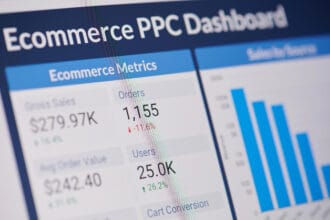So you’ve heard that over 80 percent of enterprise data has a spatial component (IDC). But what’s Location Intelligence (LI) got to do with it? And how can it transform your data from an underutilized asset into a source of competitive advantage?
Location Intelligence: Definition and opportunity
So you’ve heard that over 80 percent of enterprise data has a spatial component (IDC). But what’s Location Intelligence (LI) got to do with it? And how can it transform your data from an underutilized asset into a source of competitive advantage?
Location Intelligence: Definition and opportunity
Well, LI enables business analysts to apply geographic contexts to business data – LI combines location-based data with traditional metrics captured within a Business Intelligence (BI) system. It helps answer a business problem by providing context to business data. LI also enables you to see, understand and act on new business opportunities by uncovering previously hidden or unidentified patterns in your data, or crucial relationships between different data sources and types.
Like to learn more? Register for our LI Best Practices Webinar >
Or, as enterprise IT research and advisory firm, IDC, put it: “Location intelligence is defined as the capacity to organize and understand complex data through the use of geographic relationships. LI organizes business and geographically referenced data to reveal the relationship of location to people, events, transactions, facilities, and assets.”
Examples of the intelligence able to be derived by combining and mapping spatially significant and more conventional data types can be found here:

Additionally, there’s no shortage of industry research and analyst firms advocating the paybacks of LI.
Location Intelligence: What the research says
A recent research report – Location Intelligence: What can be Expected as BI embraces Location and Cloud – released in March last year by Saugatuck Technology, defines the benefit of LI in the following way: “Integration of Location (GIS) and standard BI platforms brings LI to greater usefulness by making it available as an option to anyone who is familiar with the more readily-available BI solutions, and without the need to master new concepts or a new user interface. Spatial relationships also greatly enhance many of the details commonly reported by BI systems, providing an added level of analysis that is useful in viewing and assessing trends (and existing data types).”
When the report was released, Ventana stated that: “Location Intelligence will be one of the key technologies to enable business innovation and will be essential for achieving new levels of growth through improvement to business processes.”
Ventana Research’s CEO and Executive Vice President of Research, Mark Smith, noted that “The use of geography and location related information and technology is a contributor of business innovation and breakthrough performance.”
So if the potential benefits are so significant, why the delayed adoption, recognition and awareness of LI?
Why the hold up?
The answers are varied. The two most prominent reasons seem to be lack of awareness and technological barriers.
Smith concurred with Deloitte’s assertion that barriers to enterprise-grade location-aware analytics functionality had resulted in low adoption rates. Smith declared that Ventana’s own research “found viral use of consumer mapping technology like Google in business but organizations are challenged in utilizing it to deal with the volumes and frequency of data that needs to be integrated.”
Further, the above Ventana Research study – Location Intelligence: Geographic Context Spurs Innovation – echoed the aforementioned TechTarget study, indicating that poor market awareness had historically been a major factor in low adoption and usage rates. The report indicated that lack of awareness was the most substantial barrier to the adoption of LI.
The potential market for this technology remains huge, with the report indicating that more than three-fourths (78%) of participants expressed willingness to utilize mapping viewers for business purposes. This was also coupled with the fact that less than one-third (31%) said they are confident or very confident that consumer mapping technology can satisfy business requirements.
How quickly things have changed
Gartner’s 2012 BI Magic Quadrant survey revealed that many organizations, across a diverse range of industries, are beginning to apply BI and analytics to new business areas. As a result, respondents listed “geographic-intelligent functions” as the standout new product requirement for 2012.
Many other prominent research, analyst and advisory bodies have made recent comments on the growing importance of LI capabilities, including:
- Ventana Research: “The evolution of information technology has matured rapidly to support the use of ‘location intelligence’ for making effective business decisions. When combined with embedded automated decision applications, location intelligence can lead to the execution of precise customer decision strategies and a new level of enterprise performance. Having a unified view of information that includes the locations of your products and their places in the supply chain can enable you to monitor the continuity of business and manage its efficiency through delays or crises.”
- Ovum: “Many are now looking to capitalize on location data in their BI to better leverage the ‘where’ in operational and strategic decision making. LI can make BI sizzle.”
- Deloitte: “Time and place underpin everything that happens in our lives and everything we know and learn about the world. Today’s technology allows us to collect information about nearly all of these events, fueling an explosion of real-time, location-aware data.”
These comments carry extra weight considering the rapid proliferation of corporate data assets, as organizations continue to capture greater and more complex data volumes and types.
Gartner has put the propagation of available data into perspective, stating that the volume of data generated in 2009 alone was greater than in the preceding 5,000 years combined. Further, IDC predicts that digital content volume will balloon by 2.7 zettabytes in 2012 – a 48 percent boost from 2011 – and drive the next wave of investments in business analytics. Gartner estimated – in its recent report Pattern-Based Strategy: Getting value from Big Data – that worldwide data volumes are growing at a minimum rate of 59 percent per year. In fact, IDC predicts that the volume of data generated per year will reach a staggering 35 zettabytes – that’s equivalent to 35 million petabytes – by 2020.
The relevance to LI? As we noted in our introductory paragraph, over 80 percent of business data has a spatial component. And what’s the point of entering the ‘Big Data’ age if your organization doesn’t have the right tools to glen insights and knowledge from that information capable of improving operational and strategic decision-making?
Where to next?
Merging your location-based and traditional BI information provides context to your business data and enables you to see new opportunities.
So register for our Webinar event – Location Intelligence Best Practices – and learn how to harness advanced mapping capabilities to advantage your organization by effectively aligning business development and strategy.







